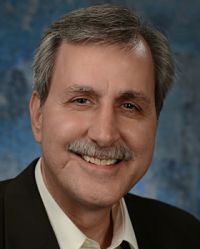 Faced with rising and volatile energy prices and the specter of potential power outages, eBay decided last year that it was time to step up its use of renewable power sources.
Faced with rising and volatile energy prices and the specter of potential power outages, eBay decided last year that it was time to step up its use of renewable power sources.
With its data centers comprising about half of the company's energy consumption, eBay's sustainability team determined it made sense to focus on those facilities. First, it would consolidate the company's eight U.S. centers into three situated in Utah, Arizona and Nevada. In addition, it would add onto the existing Utah center to create a 30-megawatt facility powered entirely by renewable energy, to be completed by mid-2013.
“This means we'll be completely clean and green,” says Dean Nelson, senior director of global data center strategy, architecture and operations at the San Jose, Calif.-based online commerce platform, at right. “We're reinventing how we run our data centers.”
Like eBay, most corporations face a similar dilemma: how to reduce energy costs, address volatile prices and ensure reliable power, all while cutting greenhouse gas emissions. To address those issues, a growing number of companies are getting serious about using renewable energy sources, such as solar or wind, for at least some of their power needs.
About 66% of companies plan to increase or significantly increase the amount of energy they get from self-generated renewables over the next five years, according to a recent survey of 100 multinationals by Ernst & Young. “We're definitely seeing a change in companies' commitment to use clean energy,” says Natasha Scotnicki, director of the corporate program at Ceres, a Boston-based nonprofit that works with businesses on sustainability issues.
At UPS, for example, the company's air and ground fleet comprises the lion's share of its energy consumption. So recently, according to Lynnette McIntire, a company spokesperson and a member of its sustainability team, Atlanta-based UPS expanded its “green fleet”—trucks whose engines run on anything from electricity to liquefied natural gas—by 35%, to 2,500 vehicles, and stepped up its efforts to experiment with different types of vehicles powered by different types of fuel: large tractor-trailers for long-distance driving vs. smaller vehicles for urban areas, for example. UPS is also working with the Department of Energy on the Interstate Clean Transportation Corridor, known as the natural gas corridor, an effort to create an infrastructure for vehicles powered by natural gas. For now, the corridor goes from Long Beach, Calif., to Salt Lake City.
McIntire won't say how much UPS has invested in these efforts, but it has received plenty of federal and state incentives to help. For example, working with a truck manufacturer, UPS received payments from the state of California, the entry point for the natural gas corridor, including $60,000 each for 30 tractors and $40,000 for an unspecified number of electric package cars.
At eBay, Nelson and his colleagues figured that since the electricity used to manage data made up a substantial portion of the company's total power usage, that's where they should start. What's more, with a warehouse of servers at the service of more than 100 million customers at any given time, avoiding power outages was of critical importance. Such events mean a loss of about $2,000 per second for the company, according to Nelson.
EBay's solution was ambitious: Starting with the Utah facility, the company would use renewable energy as a source of on-site power generation. “This is the first step in our onsite renewable energy generation strategy,” says Nelson. The upgraded facility would handle eBay's e-commerce marketplace, PayPal payment system and StubHub ticket sales—and, according to Nelson, eBay would be the first major technology company to use renewable energy, in the form of fuel cells, as the main source of power for its data centers. The fuel cells, which are powered by biofuels from such sources as landfills, are supplied by a third party, and more of them can be added as the demand for power increases.
It's not clear how long it will take to see a return on the investment, Nelson says, but adds, “it will be cheaper over time compared to utility costs.”
In many cases, the C-Suite has become more involved in decisions about renewable energy. At 66% of the companies surveyed by Ernst & Young, for example, a C-suite executive or board chairman has final decision-making authority in these matters. At UPS, the chief sustainability officer reports to the company's COO, who also is the chair of the sustainability committee. That group is made up of seven members of the 11-person management committee, all high-level executives just below the C-suite level.
At other companies, decisions are made at a lower level. About a year ago, the corporate service team at Summit, N.J.-based Celgene, evaluated the drug development company's facilities in North America and decided to start with an effort to have its headquarters completely powered by green energy by the end of this year, buying from a supplier of wind, solar and hydroelectric power. Still, if it came to a larger, corporate-wide plan, “the corporate services team would present a plan to our leadership, who would make a final decision and roll it out to the company,” says Vincent Barilla, executive director of facilities at Celgene.
 Introducing renewable energy comes with a variety of challenges, of course, but they may differ from company to company. For example, while compliance with regulations tends to be a headache for everyone, according to Ernst & Young, some companies' strategies may mean they have to address their own, idiosyncratic issues. Take eBay. The company's plan called for a local utility to serve as the backup energy provider for its Utah center. Trouble was, Utah law didn't let non-utility consumers buy and transmit power from producers of renewable energy. But Utah generates its power almost entirely from coal, an energy source that didn't jibe with eBay's sustainability standards. “It's very dirty power,” says Nelson.
Introducing renewable energy comes with a variety of challenges, of course, but they may differ from company to company. For example, while compliance with regulations tends to be a headache for everyone, according to Ernst & Young, some companies' strategies may mean they have to address their own, idiosyncratic issues. Take eBay. The company's plan called for a local utility to serve as the backup energy provider for its Utah center. Trouble was, Utah law didn't let non-utility consumers buy and transmit power from producers of renewable energy. But Utah generates its power almost entirely from coal, an energy source that didn't jibe with eBay's sustainability standards. “It's very dirty power,” says Nelson.
The answer: The company worked with various organizations, including Data Center Pulse, a group for data center professionals, Rocky Mountain Power, the state's largest utility, state government officials and others to change the law. Legislation allowing non-utilities to deal directly with producers of renewable energy was passed earlier this year.
For Akron, Ohio-based Goodyear, which is moving to use renewables to power its manufacturing plants, one particular challenge is the condition of each country—that is, how advanced the infrastructure, policies and acceptance of alternative energy sources are in different regions. The company has found that Europe is further along than other regions, so that's where it has focused its recent efforts to install renewables. For example, last year, the company revamped all six of its plants in Germany to use solar, wind and geothermal energy.
“Renewable energy makes sense everywhere for us,” says Dennis McGavis, director of global sustainability, pictured above. “It's just going to happen at different rates in different places.”
For a look at how companies are preparing for possible physical risks related to global warming, see Bracing for Climate Change. See the results of Treasury & Risk's 2012 Going Green Survey here.
© 2025 ALM Global, LLC, All Rights Reserved. Request academic re-use from www.copyright.com. All other uses, submit a request to [email protected]. For more information visit Asset & Logo Licensing.




